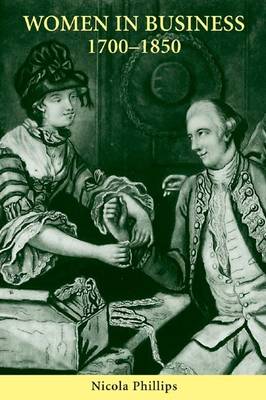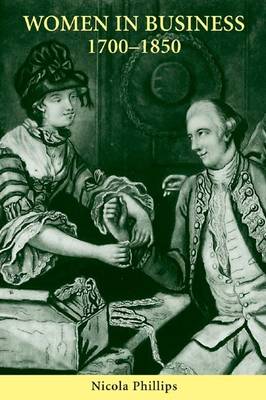
Je cadeautjes zeker op tijd in huis hebben voor de feestdagen? Kom langs in onze winkels en vind het perfecte geschenk!
- Afhalen na 1 uur in een winkel met voorraad
- Gratis thuislevering in België vanaf € 30
- Ruim aanbod met 7 miljoen producten
Je cadeautjes zeker op tijd in huis hebben voor de feestdagen? Kom langs in onze winkels en vind het perfecte geschenk!
- Afhalen na 1 uur in een winkel met voorraad
- Gratis thuislevering in België vanaf € 30
- Ruim aanbod met 7 miljoen producten
Zoeken
Omschrijving
Orthodox opinion is that in the `long' eighteenth century women, especially of the middle classes, had very little involvement with business affairs and enterprises, and that as a group they were more usually characterised by their domestic roles. This book takes issue with this view, arguing that the major factors which supposedly prevented women's economic activity in this period had much less impact than has previously been thought. It demonstrates that despite the pressure of gendered cultural expectations, financial barriers and legal disabilities, many women participated extensively in entrepreneurial activity as integrated members of trading networks, exchanging money, credit, property and goods with male traders on a regular basis throughout the period. The author examines how women in business engaged with the tangled legal systems of common law, borough customs and equity, showing that the legal doctrine of coverture did not in practice curtail married women's ability to trade on their own account; she goes on to look at women's business practices, partnerships and credit networks, including their involvement in the insurance business and newspaper advertising. Finally, she considers the impact of domestic ideology, particularly on women in the feminine trades of millinery and dressmaking, and the languages women used to express their commercial interests.
Specificaties
Betrokkenen
- Auteur(s):
- Uitgeverij:
Inhoud
- Aantal bladzijden:
- 312
- Taal:
- Engels
Eigenschappen
- Productcode (EAN):
- 9781843831839
- Verschijningsdatum:
- 12/01/2006
- Uitvoering:
- Hardcover
- Formaat:
- Genaaid
- Afmetingen:
- 164 mm x 243 mm
- Gewicht:
- 576 g

Alleen bij Standaard Boekhandel
+ 418 punten op je klantenkaart van Standaard Boekhandel
Beoordelingen
We publiceren alleen reviews die voldoen aan de voorwaarden voor reviews. Bekijk onze voorwaarden voor reviews.









